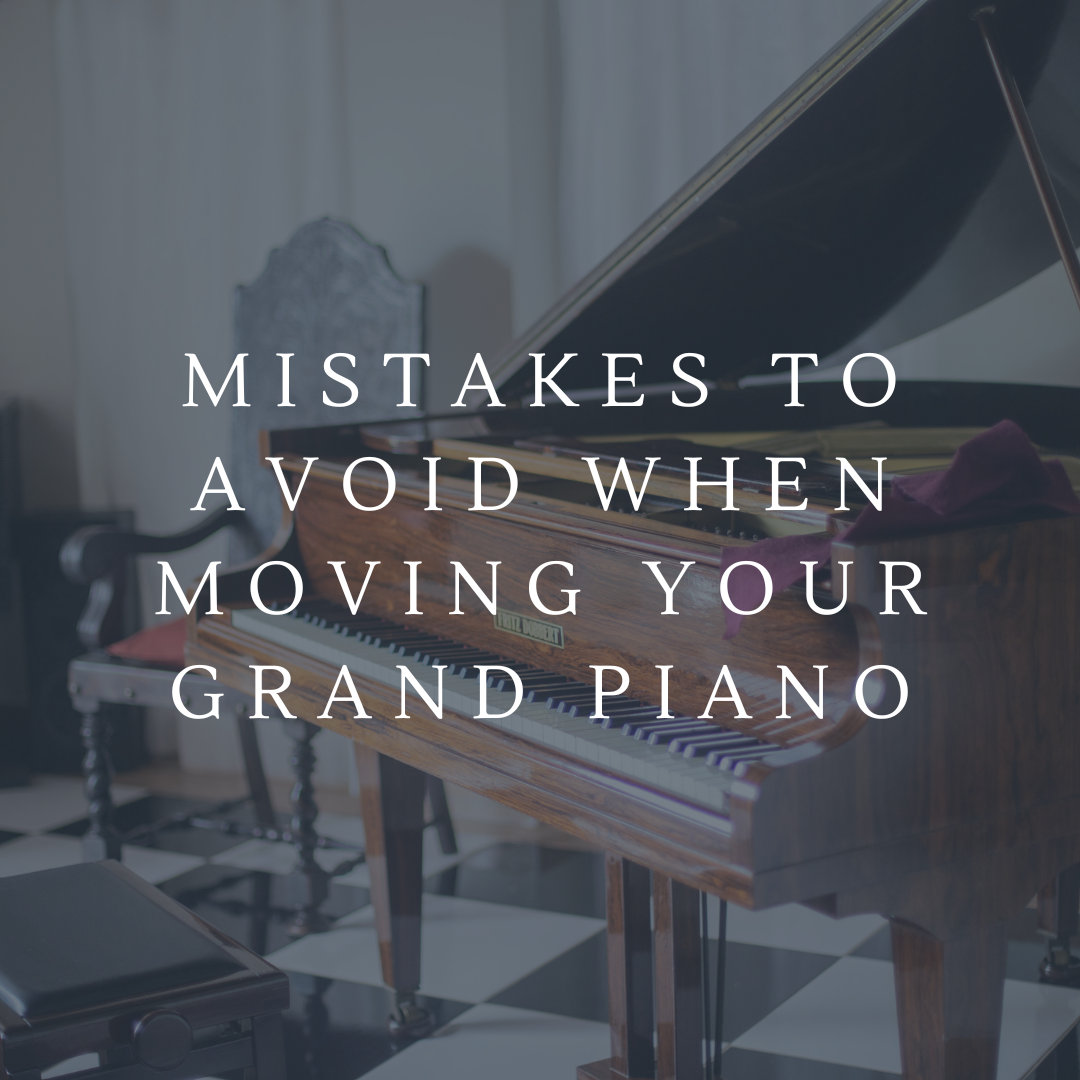
Moving a grand piano is no easy task. Its size, weight, and delicate components make it one of the most challenging items to transport. Without proper care, you risk damaging the piano’s structure, internal mechanisms, and finish, or worse, injuring yourself or others in the process.
To ensure a safe and damage-free move, here are seven common mistakes to avoid when shifting your grand piano.
Pushing the Piano Instead of Lifting It
At first glance, the small casters (wheels) under a grand piano may give the impression that you can push it across the floor with ease. However, these wheels are primarily decorative and not built for movement.
Why this is a mistake:
Casters can break under the piano’s weight.
Excessive pressure on the legs can cause them to crack or weaken.
Scratching or denting hardwood floors is a high risk.
What to do instead:
Use a piano dolly or professional moving equipment to lift and transport the piano safely.
It might seem logical to tilt the piano when navigating through doorways, hallways, or corners, but this can lead to serious damage.
Why this is a mistake:
A grand piano is top-heavy, and tilting it too much can cause it to topple over.
The internal frame and soundboard are sensitive to sudden shifts in weight.
It increases the risk of personal injury to those handling the move.
What to do instead:
Keep the piano as level as possible and use a piano skid board to help with maneuvering.
A grand piano is an extremely heavy and bulky instrument, and attempting to lift it without proper support is both unsafe and impractical.
Why this is a mistake:
Lifting the full weight manually can lead to back injuries.
The piano’s frame and legs are not designed for direct lifting.
Improper handling can cause dents, scratches, or internal misalignment.
What to do instead:
Use a piano dolly or a skid board specifically designed for transporting grand pianos. These tools distribute the weight evenly, making the move safer and smoother.
The keyboard lid protects the piano’s delicate strings, hammers, and action components. Some movers may attempt to remove it, thinking it will make the piano easier to transport.
Why this is a mistake:
The lid is essential for protecting the piano’s internal mechanics.
Removing it can expose sensitive parts to dust, impact damage, and warping.
What to do instead:
Leave the lid closed and secured during transport.
The lyre is the structure that holds the pedals and rods in place. It is attached to the underside of the piano and is often overlooked during moving preparations.
Why this is a mistake:
The lyre is not built to support the piano’s weight and can be damaged if left attached.
Keeping it on makes the piano harder to navigate through tight spaces.
A grand piano’s wood exterior is one of its most beautiful features, but it is also highly susceptible to scratches, dents, and chips.
Why this is a mistake:
A single bump or impact can cause visible damage to the piano’s finish.
Lack of padding leaves the instrument vulnerable to pressure damage during transportation.
What to do instead:
Wrap the piano in thick furniture blankets or specialized piano padding to protect it from scratches, scuffs, and dents. Secure the padding with moving straps to prevent shifting during transit.
Moving a grand piano requires careful planning, the right equipment, and experienced professionals. In addition to avoiding these common mistakes, be sure to:
Hire professional piano movers with experience handling grand pianos.
Measure doorways, hallways, and staircases before the move to ensure a smooth transition.
Have the piano tuned after relocation, as moving can affect its internal mechanics and sound.
By taking the right precautions, you can ensure that your grand piano arrives safely in its new home, ready to fill the space with beautiful music.

An acoustic piano isn't just a musical instrument—it’s an investment in artistry, craftsmanship, and tradition. To keep it sounding beautiful for years to come, regular care is essential. Whether you’re a seasoned pianist or a beginner, here’s how to maintain your piano and ensure it remains in excellent condition.

Music has long been recognized as a powerful tool for emotional and creative growth. Among all musical instruments, the piano stands out as a gateway to self-expression, cognitive development, and emotional well-being. Whether you're a beginner learning your first melody or a seasoned pianist composing intricate harmonies, playing the piano fosters holistic development in ways that go beyond the keys.

At just 20 years old, pianist Madison Yan is already enchanting audiences with a blend of technical brilliance, emotional depth, and fearless authenticity. We had the chance to sit down with Madison after her standout performance at Northwest Pianos—an event so packed with anticipation, we had to turn people away at the door. (Don’t worry—we’re working on a return performance!)